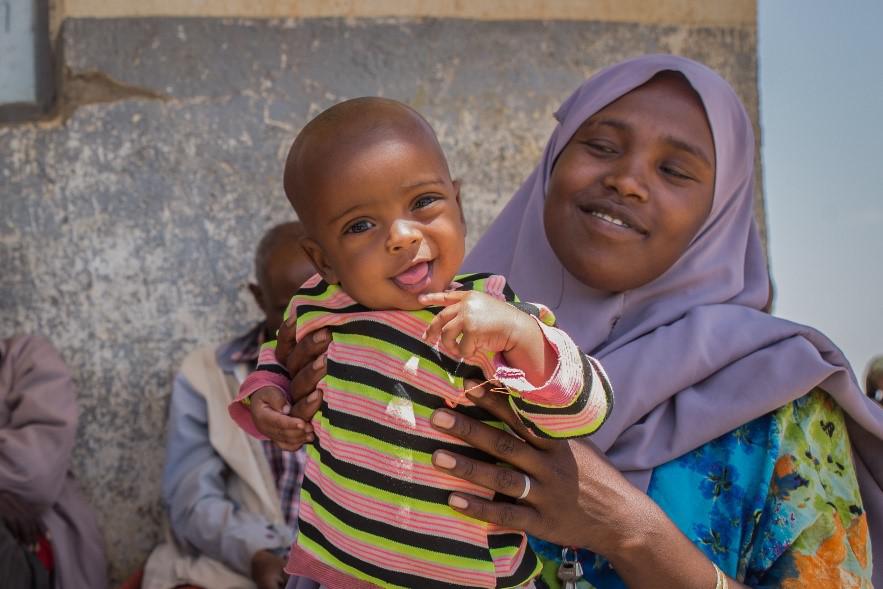For the last three years, I’ve been working to make Ethiopia’s Productive Safety Net (PSNP) both more nutrition sensitive and better connected to health services. PSNP is the main tool to help forward Ethiopia’s Social Protection Policy and Strategy, which provides regular cash or food transfers to over 8 million people in need.
Most support is delivered through a six-month public work program, but those who are labour constrained (and can’t participate in public works) receive direct transfers throughout the year.
Considering the program’s size and the fact that PSNP is well targeted to the poor, the benefits of linking PNSP clients with health and other essential social services could be decisive for the Ethiopian government. During my field visits, I talk with teachers and health workers to determine which PSNP clients actually access their services. The health workers are often people’s first contact with the health care system that provides free preventive, and high impact curative health services at the community level.
Throughout my conversations with the community workers, it became clear that – despite best efforts – vulnerable members in PSNP households access fewer essential services than the rest of the population. This is also shown by statistics: a 2014 study showed that only 28 percent of women in PSNP households receive prenatal care from a skilled provider versus 36 percent of women in non-PSNP rural households. Children in PSNP households are also more likely to be stunted (47 percent) than those in non-PSNP client households (42 percent). Service providers and community groups also report on complications to support children facing protection issues. A study from 2011 showed that just over 27 percent of children between 5 and 14 years of age are involved in child labour. To address these issues, PSNP has recently introduced innovative systems for pregnant and lactating women, as well as for caretakers of malnourished children, to receive unconditional transfers. Those who receive transfers are then required to share responsibilities relating to their use of prenatal, postnatal and child health services.
Follow-up discussions with PSNP clients show they continue to face specific poverty-related vulnerabilities and barriers to access basic services. They are either not aware of the importance of services, don’t know when they are offered, have no time, aren’t sufficiently mobile or can’t bear the related costs — such as transport or school uniforms. Additionally, the workload of teachers and health workers does not always allow them to reach out to all vulnerable households.
We wondered what could be done to increase likelihood that vulnerable and poor households with children would access locally available services. Subsequently, UNICEF tasked me to define major challenges and identify some global best practices that could be replicated in Ethiopia. From the review, it became clear that Ethiopia has set out various policies and programmes to improve equitable access to a comprehensive set of essential social services. Evidence from Africa, Asia and Latin America show that other countries have faced similar issues but gradually succeeded in moving towards integrated social protection systems, which allows greater access to basic services for the disadvantaged.
The approach used in Ethiopia is context-specific, of course, but global evidence provides some useful guidance. In Ethiopia, priority should be given to enhancing linkages between safety net and complementary service delivery programs; many examples exist, but they include linking safety net clients with subsidized health insurance plans to reduce out-of-pocket expenditures, or using safety net gatherings to promote caring and health-seeking behaviour for vulnerable clients. In addition, targeted support from community organizations and social workers can empower safety net households further to overcome poverty- and vulnerability- related obstacles to access essential services.
Communities have been very effective in safety net and child protection programmes’ implementation, especially when paired with social workers. Other countries have also found that setting up effective coordination mechanisms and shared data management systems can help programme implementation and ease access to services by the poor. Moving towards an integrated social-protection-system delivery involves many sectors and interventions, evidence from other countries provide some direction on how to approach this.
Again, although the report was developed for Ethiopia Social Protection stakeholders, it also provides examples for other countries that aspire to an integrated social protection system.
Read the report:
http://www.unicef.org/ethiopia/ECO_REPOM_Access_of_the_poor_and_vulnerable_interactive.pdf
By Remy Pigois, Chief of Social Policy in the UNICEF Ethiopia office
 FR
FR EN
EN AR
AR











